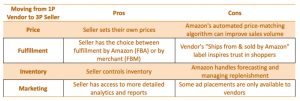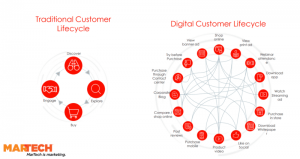— November 26, 2018

Free-Photos / Pixabay
The term “nurture program” can have different meanings to people across, and even within, organizations. While some marketers may use the term to refer to a series of “drip” emails that a group of leads receive in a row, it can also be used to describe a perpetual engine serving up relevant content based on a lead’s persona and their place in their buyer’s journey. Hopefully your team is working towards the latter, but (as you may know) this is no small undertaking and requires a well-designed strategy. Below are highlights around key areas for you and your team to consider during the planning and development of an “always-on” perpetual nurture engine that is fed by multiple channels, and engages with people across multiple personas and buying stages.
- Lead Management Strategy: A lead management strategy is the mechanism that maps out the stages a lead passes through from the point where it’s simply a name in your database to a closed/won customer. This “buyer dialogue logic” quantifies the end-goal of your nurture program, provides a structure to which the content in your program should be mapped, and contains logic for handling leads at every stage of their journey. The lead management strategy is a pre-requisite to a successful nurture program.
- User-Facing Assets: Emails, landing pages, content, design, templates. Conceptually, these components are the easiest for everyone on your team to realize the importance of because they are what everyone sees (as opposed to the operational infrastructure taking place behind the scenes). However, there must be an overall strategy for how these assets tie together, and how they map to different personas and buying stages. Content should be developed to map to existing buyer personas and lead management stages, and not the other way around.
- Data Capture: What metrics will be leveraged to gauge success and what is the data needed to produce these KPI reports? Like the lead management strategy, the data strategy is a pre-requisite to a successful nurture program. When you are in the planning phase for your nurture program, you should hopefully already have answers to questions such as: Where is the data being stored – is it on the lead or contact object itself, or are you leveraging marketing automation platform statuses or Salesforce campaign objects (or a combination of these)? Are you date-stamping when key activities take place to understand how long the buyer spends in each stage? Are you collecting lead source information across all dimensions you’d like to report on? (I.e. channels, content offers, partners, etc. – ideally this information should be contained in separate fields). Is your data clean? Are members of your sales team trained on how to correctly associate contacts with opportunities, thus ensuring lead-to-revenue tracking? The data strategy must be an overarching, consistent approach that’s used not just in your nurture program, but across all engagement channels.
- Nurture Program Architecture: How is the nurture program technically structured in your marketing automation platform? Before you begin building your nurture program, it’s a good idea to whiteboard out all the paths a lead could take. A good nurture program should have logic built in to allow leads to move to different parts of the program as they move to a different stage in the lead funnel, or as information on their buyer profile changes. Some key questions to keep in mind include: Are there different tracks for different buyer personas? If so, what are the qualifications for someone being placed in Track A verses Track B? What actions should automatically flag someone for advancement to a later stage in the nurture program? At what point does a lead stop being nurtured? What happens to leads who are non-responsive? If someone downloads a piece of content from a channel other than the email nurture program, how does this impact where the lead is in the nurture program? Is there a mechanism in place for a lead to request immediate contact with sales?
- Testing Strategy: Before you go live with your nurture program, you’ll want to make sure that the user-facing assets, as well as the program architecture have been fully tested. Test emails should be sent to designated members of your team, who double-check for any broken links, formatting issues, etc. Additionally, you’ll want to ensure that everything functions correctly within the program architecture, and that all possible paths a lead could take have been fully tested. A great way to do this is by creating a spreadsheet that lists out all possible scenarios that could happen to a lead in your nurture program, and the desired outcomes. Create some test records and go through this spreadsheet line by line, marking off the passes and fails. Testing is tedious, but the more complex your nurture program is, the more important it becomes.
- Communication: You should communicate with others on your team to gather requirements and set expectations, baselines, and timeframes. Because so much of the nurture program takes place “behind the scenes” within the marketing automation and CRM platforms, it can be difficult for those on the team who do not live in those systems every day to conceptualize the technical intricacies that a nurture program requires. If you are the designated marketing technologist on your team, you’ll want to make sure that each person understands what information and sign-offs you need from them (and when you need it) to successfully implement the nurture program. Additionally, an internal communication notifying appropriate parties (such as the sales or customer support teams) when the nurture program will launch is a good practice. Once the nurture program is launched, as a team it will be important to look at the strategic and tactical inferences that can be made from the reporting, and determine how pieces of the program may be optimized moving forward.
Business & Finance Articles on Business 2 Community
(45)








